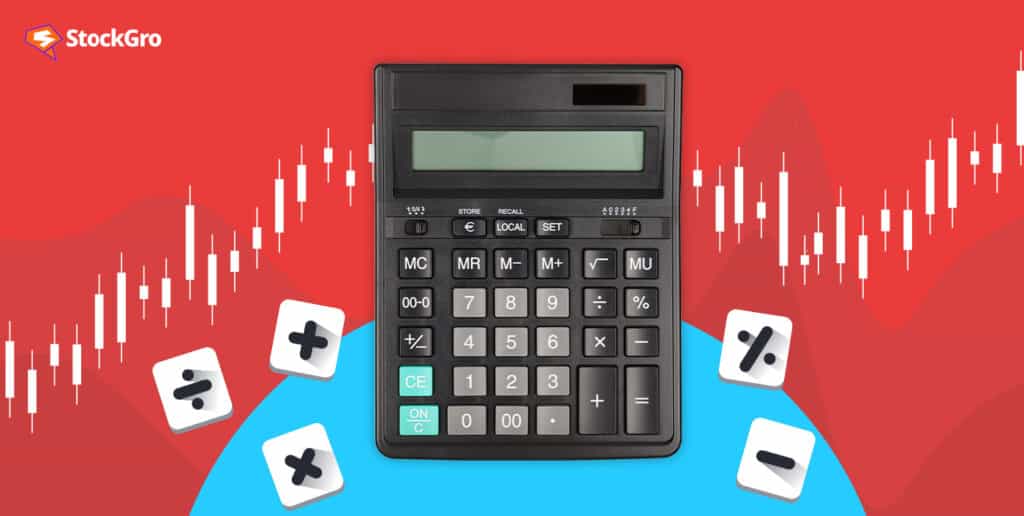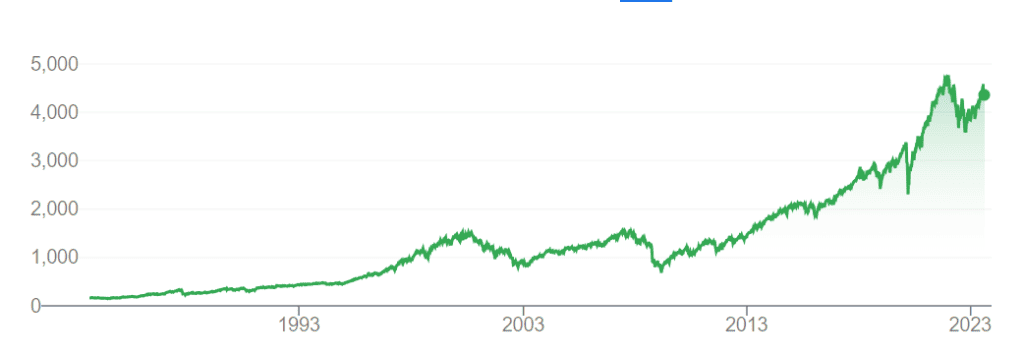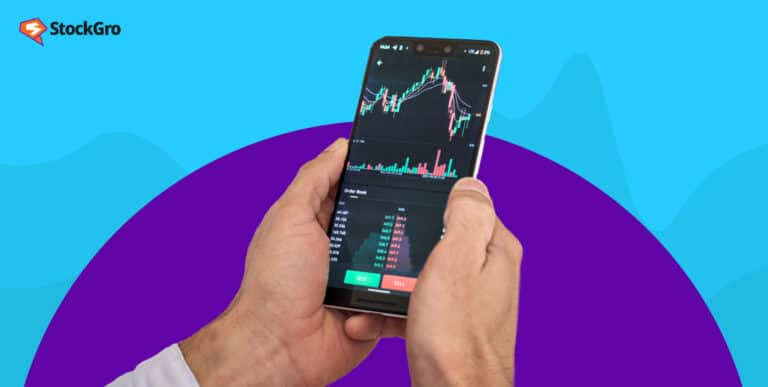
Have you ever heard terms like ‘market crash’, ‘bullish market’, and ‘bearish market’ being thrown around and wondered what they are about? The answer is that all of these terms refer to the stock market and the price of shares.
Stock price refers to the price at which a publicly traded company’s share is bought or sold. Many beginners have a common question – How to calculate share price? Keep reading to find out everything you need to know about share price calculation.
How are share prices calculated?
There is no exact ‘share price formula’ which determines the prices of shares. Stock exchanges like BSE and NSE have computerized algorithms that account for the demand and supply of stocks and decide the trading price.
The price at which there is the highest number of trades is said to be the equilibrium price of a share. Amidst constant information and trading, the equilibrium price keeps changing constantly.
You may also like: What is Capital Market – an engaging guide for beginners
Factors affecting the share price
As you learn in Economics 101, the forces of demand and supply work together to decide the price of any good or service. Shares are no different. Changes in demand and supply determine the price of shares.
If there are more buyers, there is higher demand, and the share price rises. Conversely, when sellers are more, supply is higher than demand, and the share price falls. But why do demand and supply fluctuate? You can understand this with the help of the following factors:
- Economy: Investing in a stable economy with low unemployment, desirable interest rates, and good growth prospects can lead to gains in the stock market.
- Political and policy-related factors: Changes in business-related government policy, the election of new governments, new budget announcements, and other such political and policy-related factors affect the stock market sentiment.
- Company Announcements: Investors use company financials to decide on buying, holding, or selling shares. Dividends, stock splits, and management changes also affect share prices.
- Industry Growth: The nature of the industry that a company operates in has a significant impact on its share price. Apart from this, if an industry is such that the bargaining power of customers or suppliers is higher, investors favour it more.
- Liquidity: Liquidity is how easily a share can be traded without changing its price. A higher liquidity means more investors trade it. Bid price is buying cost, ask price is selling value, and the difference is bid-ask spread.
- Volume: The trade volume of a share is the measure of the liquidity of a stock and refers to the number of trades that occur within a particular period. If a share has a low trading volume, it means that its share price is more volatile and vice versa.
- International Affairs: Global events like wars, government changes, and trade agreements can affect India’s stock market, often in sync with the US S&P 500 index.
Figure 1: The historical movement of the S&P 500

Figure 2: Historical movement of BSE SENSEX

- Natural Disasters – Since the economy suffers severely from natural disasters, it is only natural that even stock markets are affected. Natural disasters pose a threat to infrastructure and supply chains which are essential for businesses to work. In the absence of these, markets suffer.
Why does the share price change so frequently?
Thanks to the internet, information is now available at the tip of one’s fingertips for share price calculation. Investors constantly receive news from sources like financial news websites, newspapers, social media, finance apps, etc.
As a result, everyone’s reaction to the information is also quicker and is reflected immediately in share prices.
It can be hard to keep up with changing prices but moves like seeking professional advice, tracking metrics like 52-week low or high, and others could help you stay on top of the trading game.
Also Read: A guide to stock dividend
What is intrinsic value and how is it calculated?
All this while, we were discussing the market price of the share. However, there is another price called the intrinsic value of the stock. This price reflects what a stock is truly worth based on the company’s fundamentals like financial health and other such parameters.
The intrinsic value of a stock in share price calculation is essential as it helps investors determine if stocks are undervalued or overvalued.
You can calculate the intrinsic value of a share using the following methods:
Now, let’s explain each of these method used for Share Price Calculation:
1. Dividend Discount Model (DDM):
The Dividend Discount Model (DDM) is a method used for Share Price Calculation by estimating the present value of all future dividends a company is expected to pay. The formula is:
Intrinsic Value = D / (r – g)
where D is the expected annual dividend, r is the discount rate, and g is the growth rate of dividends. For example, if a company pays a ₹5 dividend, with a discount rate of 6% and a growth rate of 2%, the intrinsic value would be:
Intrinsic Value = ₹5 / (0.06 – 0.02) = ₹125
This represents the estimated share price.
2. Discounted Cash Flow (DCF):
The Discounted Cash Flow (DCF) method is a popular technique for share price calculation. It involves estimating a company’s future cash flows and discounting them to the present value using a discount rate. This helps in determining the intrinsic value of a share. The formula is:
DCF = (CF₁ / (1 + r)¹) + (CF₂ / (1 + r)²) + … + (CFₙ / (1 + r)ⁿ)
Where CF represents cash flow, r is the discount rate, and n is the number of periods.
For example, if a company expects ₹500 in cash flow next year with a 10% discount rate, the present value would be ₹454.55, guiding the share price calculation.
3. Relative Valuation Method:
This method estimates a stock’s intrinsic value by comparing it to similar companies using financial ratios like Price-to-Earnings (P/E), Price-to-Book (P/B), and others. It’s useful when direct financial data is insufficient for Share Price Calculation.
The formula for the P/E ratio is:
P/E Ratio = Market Price per Share / Earnings per Share (EPS)
For example, if a company has a P/E ratio of 10 and its peers have an average P/E of 15, the stock may be undervalued. This approach helps investors gauge if a stock is priced fairly in comparison to others in the market.
Conclusion
In conclusion, the share price is the price at which a share is traded on a stock exchange. Comprehending the factors that affect share price and learning about concepts like the intrinsic value of a stock can help you make sound investment decisions and develop an effective trading strategy.

